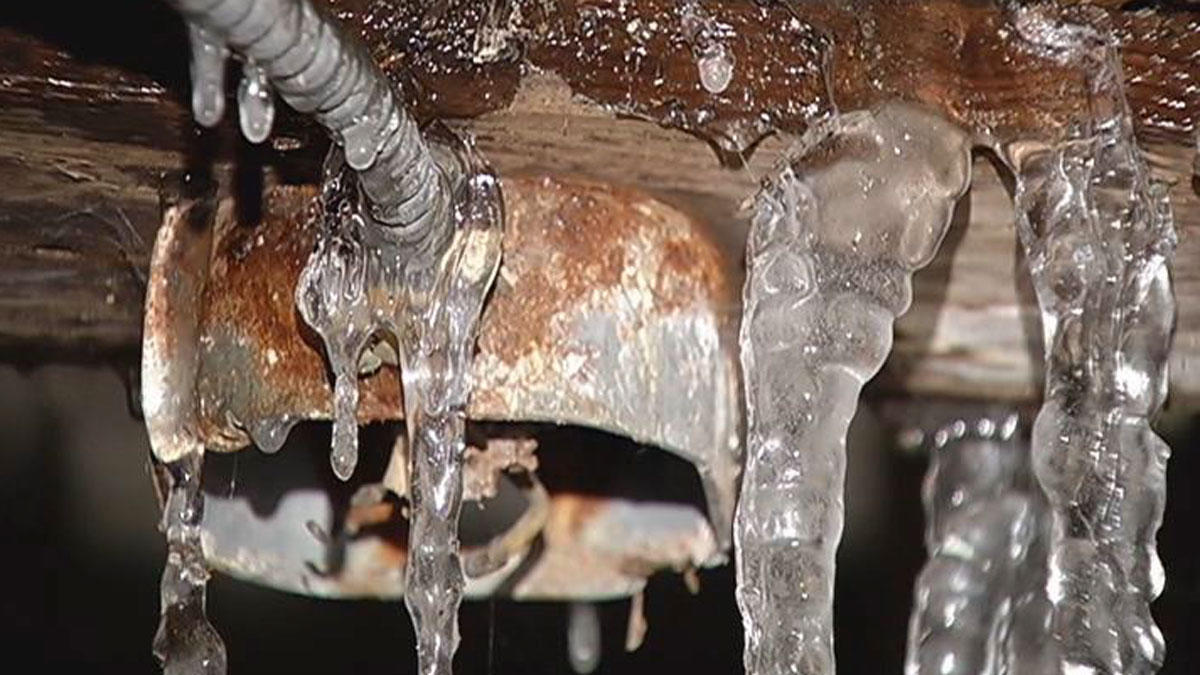This article listed below in relation to How to prepare your home plumbing for winter weather is indeed compelling. Give it a try and make your own personal findings.

Cold weather can wreak havoc on your pipes, specifically by freezing pipelines. Below's how to avoid it from occurring and what to do if it does.
Introduction
As temperatures drop, the danger of icy pipelines increases, potentially bring about pricey fixings and water damage. Understanding just how to avoid frozen pipelines is important for house owners in cool environments.
Comprehending Frozen Pipelines
What creates pipes to ice up?
Pipelines freeze when revealed to temperature levels listed below 32 ° F (0 ° C) for expanded durations. As water inside the pipes ices up, it expands, taxing the pipeline wall surfaces and potentially triggering them to burst.
Dangers and damages
Frozen pipelines can cause water system interruptions, residential or commercial property damage, and pricey repair services. Burst pipelines can flood homes and cause substantial architectural damages.
Indications of Frozen Pipes
Determining icy pipes early can stop them from rupturing.
Just how to determine icy pipelines
Try to find decreased water circulation from taps, unusual odors or noises from pipes, and noticeable frost on exposed pipes.
Avoidance Tips
Insulating susceptible pipes
Cover pipes in insulation sleeves or use warm tape to safeguard them from freezing temperature levels. Focus on pipes in unheated or external locations of the home.
Heating methods
Maintain interior areas effectively warmed, particularly areas with pipes. Open up cupboard doors to allow warm air to flow around pipelines under sinks.
Securing Outdoor Pipes
Yard pipes and outdoor faucets
Detach and drain garden tubes prior to winter. Mount frost-proof spigots or cover exterior faucets with protected caps.
What to Do If Your Pipelines Freeze
Immediate actions to take
If you presume frozen pipes, maintain faucets open to relieve stress as the ice melts. Use a hairdryer or towels soaked in warm water to thaw pipes gradually.
Long-Term Solutions
Structural modifications
Think about rerouting pipelines away from outside wall surfaces or unheated locations. Include extra insulation to attics, cellars, and crawl spaces.
Upgrading insulation
Buy top quality insulation for pipes, attics, and wall surfaces. Appropriate insulation assists keep constant temperature levels and reduces the risk of icy pipelines.
Verdict
Stopping icy pipes needs proactive actions and quick actions. By understanding the reasons, indications, and preventive measures, homeowners can shield their plumbing during cold weather.
6 Proven Ways to Prevent Frozen Pipes and Protect Your Home
Disconnect and Drain Garden Hoses
Before winter arrives, start by disconnecting your garden hoses and draining any remaining water. Close the shut-off valves that supply outdoor hose bibs and leave the outdoor faucet open to allow any residual water to drain. For extra protection, consider using faucet covers throughout the colder months. It’s also important to drain water from any sprinkler supply lines following the manufacturer’s directions.
Insulate Exposed Pipes
Insulating your pipes is an effective way to prevent freezing. Pipe insulation is readily available at home improvement stores and is relatively inexpensive. Pay close attention to pipes in unheated areas such as the attic, basement, crawl spaces, or garage. Apply foam insulation generously to create a buffer against the cold. You can also wrap your pipes in heat tape or thermostat-controlled heat cables for added warmth.
Seal Air Leaks
Inspect your home for any cracks or openings that could let in cold air. Seal any holes around the piping in interior or exterior walls, as well as the sill plates where your home rests on its foundation. Additionally, make sure to keep your garage door closed unless you’re entering or exiting. Leaving it open creates a significant air leak that can lead to frozen pipes.
Allow Warm Air Circulation
During cold snaps, it’s essential to allow warm air to circulate evenly throughout your home. Leave interior doors ajar to promote better airflow. Open kitchen and bathroom cabinets to help distribute heat consistently around the rooms. If you have small children or pets, be sure to remove any household chemicals or potentially harmful cleaners from open cabinets for safety.
Let Faucets Drip
A small trickle of water can make a big difference in preventing ice formation inside your pipes. When temperatures drop significantly, start a drip of water from all faucets served by exposed pipes. This continuous flow helps prevent the water from freezing. Additionally, running a few faucets slightly can relieve pressure inside the pipes, reducing the chances of a rupture if the water inside does freeze.
https://choateshvac.com/6-proven-ways-to-prevent-frozen-pipes-and-protect-your-home/

Hopefully you liked our topic about Preventing and dealing with frozen pipes. Thanks for taking the time to read our blog. Feel free to pause to distribute this blog post if you enjoyed reading it. I enjoy your readership.
Call Today